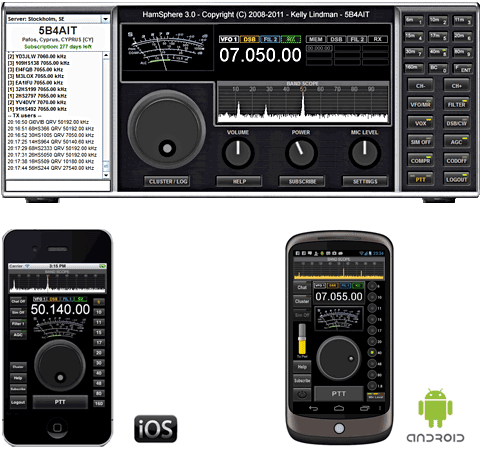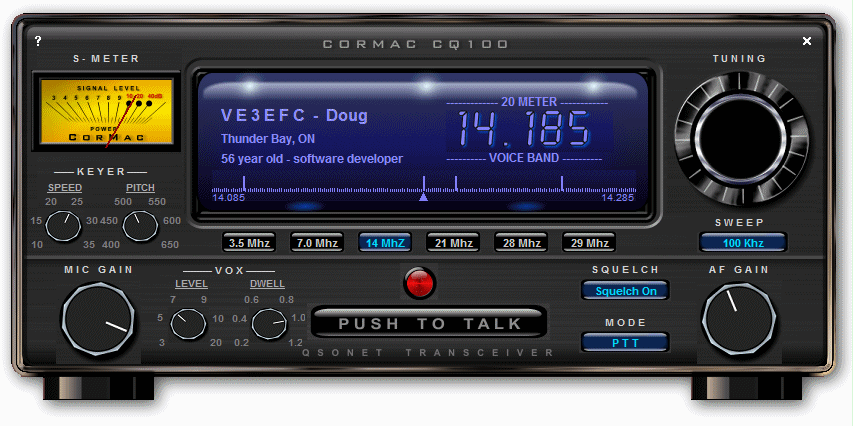 |
| Base loaded whip and battery operated FT817 on Dartmoor |
30 Apr 2013
Moorland DXing
Labels:
devon dartmoor qrp
29 Apr 2013
DXing on the Devon coast
 |
| Thurlestone, Devon |
Labels:
devon,
mobile,
pedestrian portable
26 Apr 2013
TJ2B 4 band HF SSB/CW handheld
Reading Julian G4ILO's excellent blog I noticed he mentioned the Youkits TJ2B 4 band HF SSB/CW transceiver from China. The spec of this little handheld looks most interesting with 2 versions covering a choice of 4 HF bands in each option. Available ready built for just $329 with first shipments due around now. A kit version is also available for $269.
Now, at THAT price, this is a much more interesting little commercial unit to climb up that SOTA mountain or clifftop with!
For many months I've been predicting downturns in the Yaesu/Icom/Kenwood sales as a result of the increase in activity from Chinese suppliers. This is surely just the start.
Now, at THAT price, this is a much more interesting little commercial unit to climb up that SOTA mountain or clifftop with!
For many months I've been predicting downturns in the Yaesu/Icom/Kenwood sales as a result of the increase in activity from Chinese suppliers. This is surely just the start.
Labels:
handheld,
hf transceiver,
qrp,
youkits
Using the KX3 portable?
As I prepare for my West Country holiday with my brother next week, I'm amused to see the QST advert for the Elecraft KX3 in use in very rocky terrain. Why am I amused? Well, there is no way that I'd take a "fully loaded" KX3 costing close to £1200 (in UK prices) up a mountain as shown in the photo!
It is OK taking a 12 year old FT817 or a 6 year old VX2 handheld: if these get damaged it's not be a disaster as I've already had huge value from them. But an investment of close on £1200 is another matter.
Perhaps I am not typical, but if I was to spend this sort of money I would not want to throw it in a backpack, risk dropping it on rocks or in a bog and getting battered and scratched. Also, being a very SMD intensive unit, repair is far from easy or low cost.
A better bet for a really portable transceiver to use in SOTA or other portable operations would be a rugged little direct conversion CW or DSB transceiver built into a strong die-cast case, probably for just a single band. It need not look pretty, just functional. Such a unit could be built to give good performance for under £20 buying EVERYTHING new. If dropped, one could easily fix it when back home. If it even got dropped in a bog and irrevocably damaged it wouldn't matter: just build another one!
No, something is wrong if anyone thinks they have to spend £1200 to climb a hill and enjoy amateur radio. I have no doubt the KX3 is a very excellent radio, but it is too expensive (for me) to use in backpack mode.
It is OK taking a 12 year old FT817 or a 6 year old VX2 handheld: if these get damaged it's not be a disaster as I've already had huge value from them. But an investment of close on £1200 is another matter.
Perhaps I am not typical, but if I was to spend this sort of money I would not want to throw it in a backpack, risk dropping it on rocks or in a bog and getting battered and scratched. Also, being a very SMD intensive unit, repair is far from easy or low cost.
A better bet for a really portable transceiver to use in SOTA or other portable operations would be a rugged little direct conversion CW or DSB transceiver built into a strong die-cast case, probably for just a single band. It need not look pretty, just functional. Such a unit could be built to give good performance for under £20 buying EVERYTHING new. If dropped, one could easily fix it when back home. If it even got dropped in a bog and irrevocably damaged it wouldn't matter: just build another one!
No, something is wrong if anyone thinks they have to spend £1200 to climb a hill and enjoy amateur radio. I have no doubt the KX3 is a very excellent radio, but it is too expensive (for me) to use in backpack mode.
Packing for clifftop operation next week
 |
| Operating pedestrian portable in South Devon |
For once the weather forecast is cold and reasonably sunny. Usually when I go back to Devon (where I was born and brought up) and it is raining all week my brother says, "you should have come last week - it was lovely".
Labels:
devon,
es,
ft817,
pedestrian portable
More eBay items for sale
 |
| http://myworld.ebay.co.uk/rlapthorn |
The Galapagos book cost £18.99 and is in MINT condition.
The Cinema of Isolation book is a very interesting study about how physical disability has been portrayed in the cinema over the last 100 years showing how attitudes have changed.
22 Apr 2013
23cms omni-directional horizontal antennas?
At the moment I'm still pondering the bands to try at my new QTH in a few months from now. One possibility is 23cms, a band I have never used on TX.
One consideration at the new QTH is antenna (non) visibility and I am anxious to go for "neighbour acceptable" solutions on all bands. For 2m SSB/CW/data I am still minded to use a couple of stacked big-wheel antennas giving around 5dBd horizontal gain. Up above the apex of the roof, this should soon be lost being not that much bigger than a TV yagi. The partly vertical feeder to this will load up on the HF bands as a nice stealth antenna: I have used the coax to my 10m halo as a very effective HF antenna, even on 472kHz despite being only a few metres long.
But what about 23cms? Maybe to just get on the band simply and with an unobtrusive antenna the Alford slot is worth a try? If I understand correctly, these give an omnidirectional horizontally polarized signal with around 10dBd gain. Placed at the top of the mast, maybe above the big-wheel and inside a PVC pipe as a radome, and fed with low loss coax (or with the transverter up near the antenna) this might be enough to work the locals during UKAC contests. Alford slots are popular for 23cm beacons and ATV, so why not for local 23cm SSB/CW activity or for weak signal data modes?
Another possibility would be a big-wheel (or should it be tiny wheel?) on 23cms. This would be about 12cms across only!
The photo above was from an eBay item which sold for around £130 back in April. Is anyone aware of commercially available 23cms horizontal omni-directional antenna?
One consideration at the new QTH is antenna (non) visibility and I am anxious to go for "neighbour acceptable" solutions on all bands. For 2m SSB/CW/data I am still minded to use a couple of stacked big-wheel antennas giving around 5dBd horizontal gain. Up above the apex of the roof, this should soon be lost being not that much bigger than a TV yagi. The partly vertical feeder to this will load up on the HF bands as a nice stealth antenna: I have used the coax to my 10m halo as a very effective HF antenna, even on 472kHz despite being only a few metres long.
But what about 23cms? Maybe to just get on the band simply and with an unobtrusive antenna the Alford slot is worth a try? If I understand correctly, these give an omnidirectional horizontally polarized signal with around 10dBd gain. Placed at the top of the mast, maybe above the big-wheel and inside a PVC pipe as a radome, and fed with low loss coax (or with the transverter up near the antenna) this might be enough to work the locals during UKAC contests. Alford slots are popular for 23cm beacons and ATV, so why not for local 23cm SSB/CW activity or for weak signal data modes?
Another possibility would be a big-wheel (or should it be tiny wheel?) on 23cms. This would be about 12cms across only!
The photo above was from an eBay item which sold for around £130 back in April. Is anyone aware of commercially available 23cms horizontal omni-directional antenna?
Labels:
23cm,
alford slot
Virtual amateur radio systems
 |
| http://www.hamsphere.com |
 |
| www.qsonet.com |
Huge leap in rechargeable battery technology?
The ExtremeTech website has reported a possible major major (i.e. game changing) breakthrough in Li-Ion battery technology with the headlines: New lithium-ion battery design that’s 2,000 times more powerful, recharges 1,000 times faster
If this turns out to be technology that can indeed be commercialised, then just imagine the possibilities: (1) electric cars with far lighter batteries, or electric car batteries with much greater range, (2) mobile phones with tiny batteries that can be charged in a minute or so, (3) portable HF transceivers that are half the weight of the FT817 but with batteries that last for days between charges.
It all sounds just a bit too good to be true, but I am sure this was no April Fool's joke.
 |
| http://www.extremetech.com/wp-content/uploads/2013/04/ncomms2747-f3.jpg |
It all sounds just a bit too good to be true, but I am sure this was no April Fool's joke.
Labels:
battery,
extremetech,
lithium battery,
lithium ion
20 Apr 2013
Optical communications in the 19th century
With the recent upsurge in interest in long range optical communications it is easy to forget that optical data communications over long distances predates radio communications by many years. In those far-off days the data was morse code and the light came from the sun in the form of a heliograph mirror that reflected the sun's rays over long distances in daylight. Keying was usually by tilting the mirror or by keying a grill placed in front of the mirror. See http://www.modulatedlight.org/Modulated_Light_DX/Heliograph.html . Best DX achieved in the 19th century was well over 200km using these methods!
Labels:
helio
Subscribe to:
Posts (Atom)




